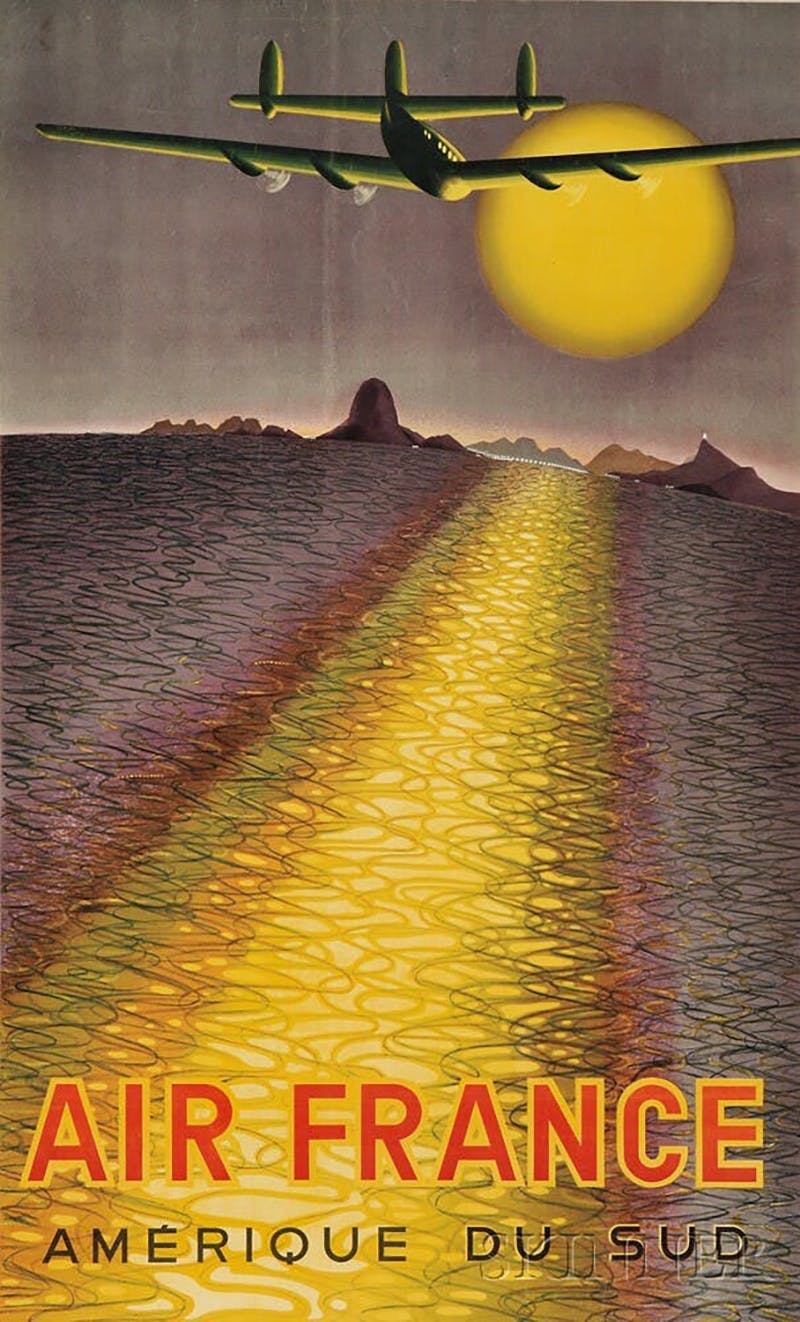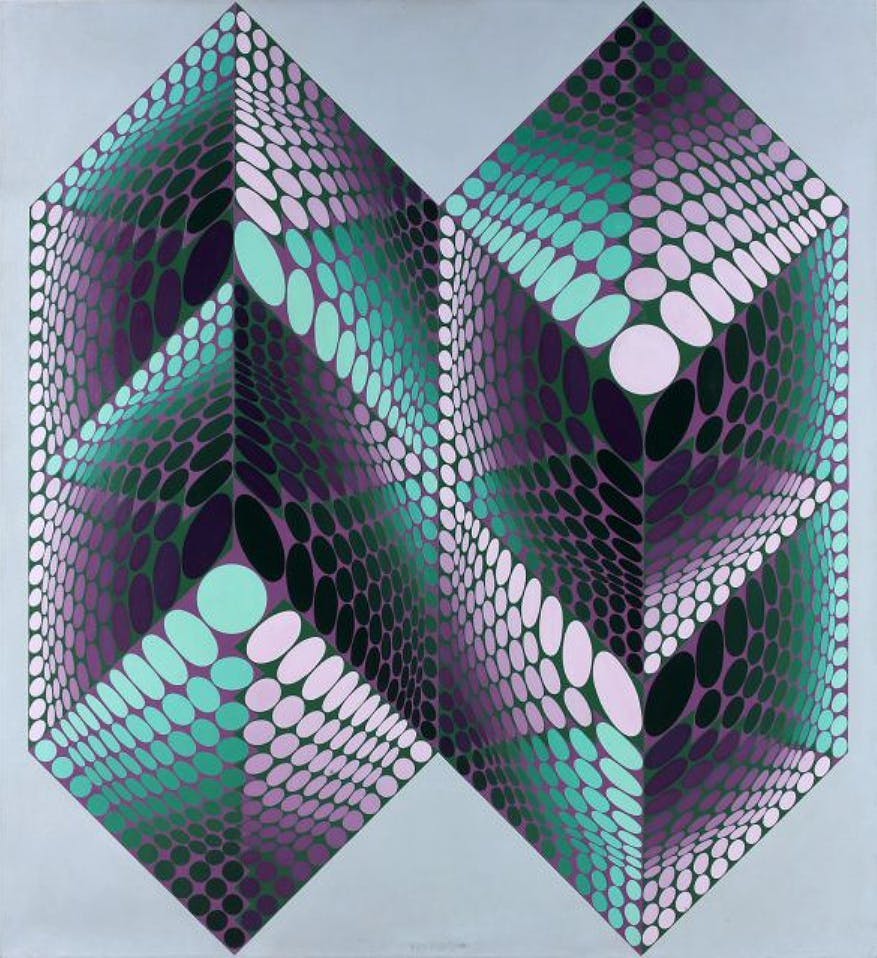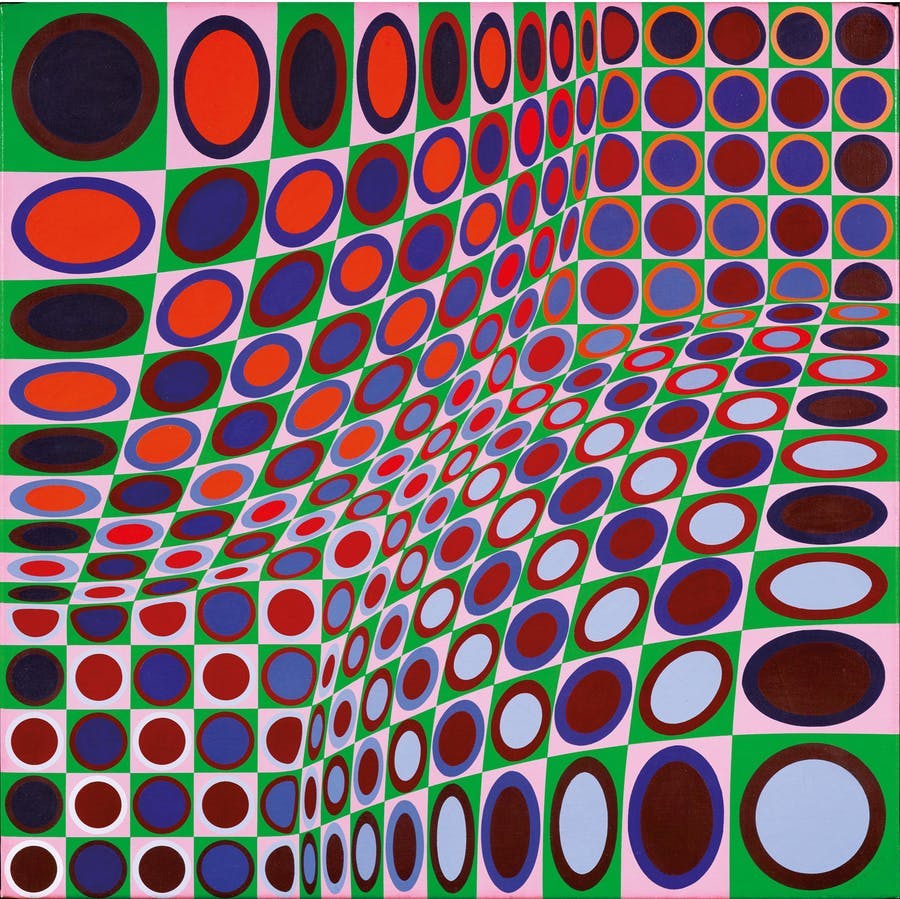Victor Vasarely: The Inventor of Kinetics
Victor Vasarely dreamed of his art plunging into the heart of community and reaching a wide audience. Though his work leaves viewers divided, it still sees increasing recognition on the market.
The Hungarian painter Victor Vasarely was one of the inventors of kinetic art, a style which gives a work the impression of movement through the play of geometric figures. He leaves behind a rich work of 10,000 bright and colorful paintings.
Born in Pécs, Hungary on April 9, 1908, Vasarely first began studying medicine, which was quickly interrupted to join the Műhely Academy in Budapest in 1928. At the time, this school of art applied Bauhaus principles, which the young Vasarely infused into his logic by following the lessons of Alexandre Bortnyik, who gave him a first glimpse of abstraction. In 1931, he moved to Paris and became a graphic artist for the Havas advertising agency.

Also passionate about painting, Vasarely took advantage of his free time to try his hand at figurative art before finding his style, mixing geometric abstraction and what later became optical art. It is said that the artist by chance, during a stay at the seaside, on a French island in the Bay of Biscay, found a certain representation of the universe in the ovoid shapes of the pebbles there. This was a source of inspiration that guided him for many years.
Related: Jean Tinguely: Mechanics of Chance
A few years later, Vasarely exhibited his post-cubist paintings for the first time at Denise René's gallery. This was in 1944, the year which corresponds to his artistic birth. Very quickly, he became a popular hero of optical art, a style which developed from the Dutch artist Piet Mondrian, and he used all possible aesthetic processes to sway visual perception.

With its repetitive geometric shapes, its illusions of movement and its scintillating colors, Vasarely's art then switched to deliberate abstraction, playing thoroughly with the audience’s gaze, though this leaves many divided. Faced with his paintings, sometimes three-dimensional, many say they are fascinated, while others, on the contrary, turn away to escape nausea…
Related: The 10 Most Scandalous Artworks
His work was radical but hit a peak in popularity at the turn of the 1960s and ‘70s. This was a prosperous period for this artist who, after having sunk into oblivion at the end of the 1990s, has since seen a renewed interest in the art world, as shown by the proliferation of exhibitions devoted to him, and the record sale of some of his paintings. This includes DUBBUK, P.1189, which sold for €150,450 ($200,000) at Artcurial in 2011, and more recently, his Zèbres (Zebras) painting, made up of black and white motifs, purchased for £485,000 ($600,000) at Christie’s in 2017. His current record stands at $907,22 for Altaï III, sold at Sotheby's in 2010.

It was also during this period of his life that Vasarely freed himself from the too narrow walls of the galleries of wealthy neighborhoods to gain the public space, which fully corresponded to his philosophy. Thus, in 1968, the visual artist produced the speed ring for the Grenoble Olympic Games. A year later, he took his first steps in pop culture, thanks to the English singer David Bowie, who used one of his paintings to illustrate the cover of his now legendary album, Space Oddity.
Related: David Bowie: The Fashion Icon
In 1972, Vasarely, a now naturalized French citizen, revamped the logo of the Renault brand before designing the Parisian façade of the headquarters of RTL radio in Paris. To end this creative period, he approached power and the political class by painting a portrait of President Georges Pompidou.

At the same time, Vasarely created his own foundation in 1971, which aimed to push art into the heart of society. The foundation was divided into two complementary poles: an educational museum based in Gordes, in the Lubéron (which is no longer in operation today), and an architectural center inaugurated in 1976 in a futuristic building, in front of the mountain Sainte-Victoire in Aix-en-Provence.

Unfortunately, inheritance problems and a multitude of financial twists and turns tarnished the image of this foundation, and consequently of this building. However, twenty years after the death of its creator, the building is gradually being reborn from the ashes with major restoration work.


